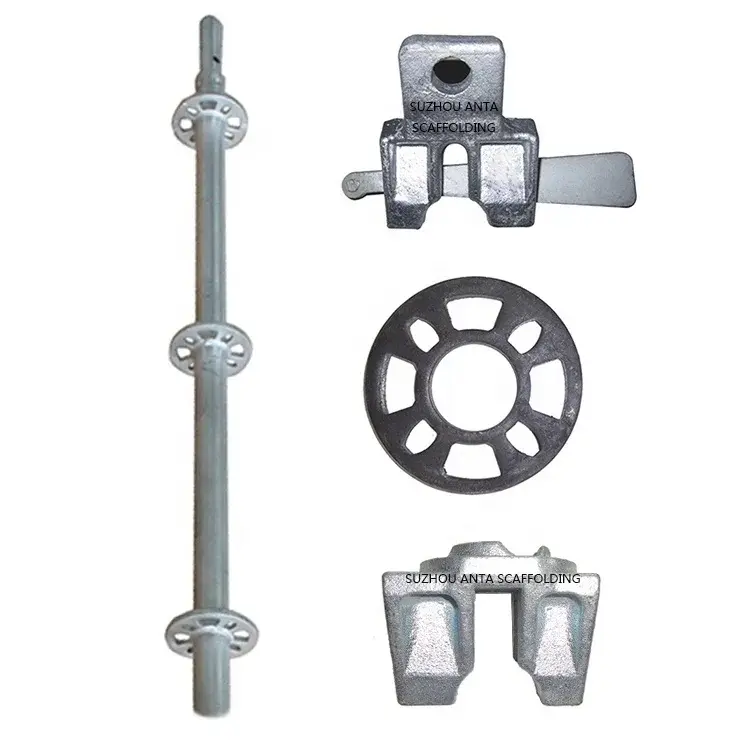Which Type Of Scaffold Is Better And Safer?-1
Introduction:
When it comes to construction projects, scaffolding is an essential tool that provides a safe and stable platform for workers to perform their tasks at heights. However, with various types of scaffolds available in the market, it can be challenging to determine which one is better and safer for your specific needs. In this article, we will explore different types of scaffolds and compare their safety features to help you make an informed decision.

Supported Scaffolding
Supported scaffolding is one of the most common types of scaffolds used in construction. This type of scaffold consists of a platform supported by rigid supports, such as poles, frames, or outriggers. Supported scaffolding is versatile and can be used for both small and large projects. One of the key benefits of supported scaffolding is its stability, as it is securely anchored to the ground or building structure.
Another advantage of supported scaffolding is its ease of assembly and disassembly. With proper training and supervision, workers can quickly set up and dismantle supported scaffolding, making it a time-efficient option for construction projects. Additionally, supported scaffolding can accommodate heavy loads and multiple workers, making it suitable for various job requirements.
Although supported scaffolding is generally considered safe, it is essential to follow all safety guidelines and regulations when using this type of scaffold. Regular inspection of components, proper installation, and adherence to weight limitations are crucial to prevent accidents and ensure the safety of workers.
Suspended Scaffolding
Suspended scaffolding is another commonly used type of scaffold that is suspended from the building structure or other overhead support. This type of scaffold consists of a platform that is hung by ropes or cables from a secure anchor point. Suspended scaffolding is ideal for projects that require access to elevated areas where supported scaffolding cannot reach.
One of the main advantages of suspended scaffolding is its ability to provide unhindered access to vertical structures, such as tall buildings or bridges. Additionally, suspended scaffolding is highly flexible and can be adjusted to different heights and angles to accommodate the unique needs of each project.
While suspended scaffolding offers many benefits, it also poses some safety risks that must be addressed. Workers using suspended scaffolding must undergo thorough training in fall protection and scaffold use to prevent accidents. Regular inspection of ropes, cables, and other components is essential to ensure the stability and safety of suspended scaffolding.
Mobile Scaffolding
Mobile scaffolding, also known as rolling scaffolding, is a versatile type of scaffold that can be easily moved around the worksite. This type of scaffold features wheels or casters that allow workers to transport it to different locations without dismantling it. Mobile scaffolding is commonly used for projects that require frequent repositioning, such as painting or maintenance tasks.
One of the key advantages of mobile scaffolding is its portability and convenience. Workers can quickly move the scaffold to the desired location without the need for extensive setup or dismantling, saving time and effort. Additionally, mobile scaffolding is compact and easy to store when not in use, making it an efficient option for projects with limited space.
Despite its convenience, mobile scaffolding must be used with caution to prevent accidents and injuries. Workers should ensure that the scaffold is on stable ground and locked in place before use. Regular inspection of wheels, casters, and other components is necessary to maintain the safety and stability of mobile scaffolding.
Cantilever Scaffolding
Cantilever scaffolding is a specialized type of scaffold that is supported by beams or brackets extending from the building structure. This type of scaffold is commonly used for projects that require access to areas that are obstructed or difficult to reach. Cantilever scaffolding provides a clear working area without any support from the ground.
One of the main advantages of cantilever scaffolding is its ability to extend horizontally beyond obstacles, such as building ledges or protruding structures. This feature makes cantilever scaffolding an ideal choice for projects that demand precise positioning and accessibility. Additionally, cantilever scaffolding maximizes the working space available to workers, allowing them to perform tasks efficiently and safely.
When using cantilever scaffolding, workers must follow all safety guidelines and regulations to prevent accidents. Proper installation of beams or brackets, regular inspection of components, and adherence to weight limitations are essential to ensure the stability and safety of cantilever scaffolding.
Modular Scaffolding
Modular scaffolding, also known as system scaffolding, is a versatile type of scaffold that consists of prefabricated components that can be easily assembled and disassembled. This type of scaffold is highly customizable and can be tailored to meet the specific requirements of each project. Modular scaffolding is commonly used for projects that require complex configurations or quick assembly.
One of the key advantages of modular scaffolding is its flexibility and adaptability. With a wide range of components available, workers can create custom scaffold structures to suit the unique needs of each project. Additionally, modular scaffolding is quick to assemble and disassemble, allowing for efficient use of time and resources on the worksite.
Despite its versatility, modular scaffolding requires proper training and supervision to ensure the safety of workers. Workers must be familiar with the assembly process and safety procedures to prevent accidents. Regular inspection of components, connections, and anchoring points is crucial to maintain the stability and integrity of modular scaffolding.
Summary:
In conclusion, the type of scaffold that is better and safer depends on the specific requirements of each construction project. Supported scaffolding offers stability and ease of assembly, making it a suitable option for various job tasks. Suspended scaffolding provides access to elevated areas and vertical structures, but workers must undergo extensive training to ensure safety. Mobile scaffolding is portable and convenient for projects that require frequent repositioning, but caution must be taken to prevent accidents. Cantilever scaffolding extends horizontally beyond obstacles, offering a clear working area for precise positioning and accessibility. Modular scaffolding is versatile and customizable, allowing for quick assembly and disassembly to meet the unique needs of each project. By understanding the features and safety considerations of each type of scaffold, you can choose the most suitable option for your construction project.

